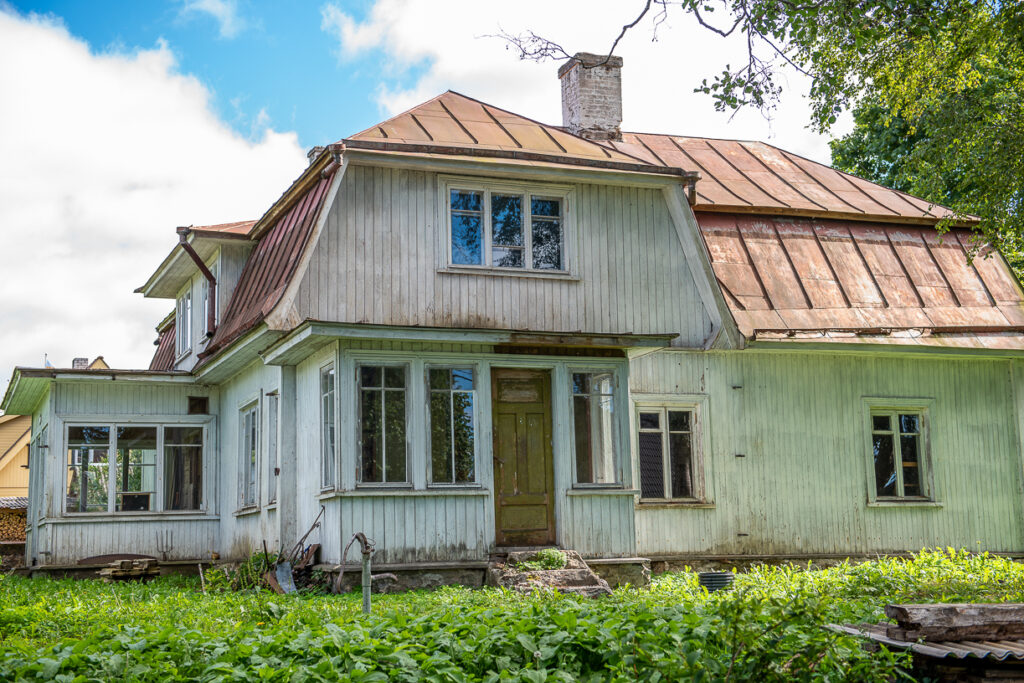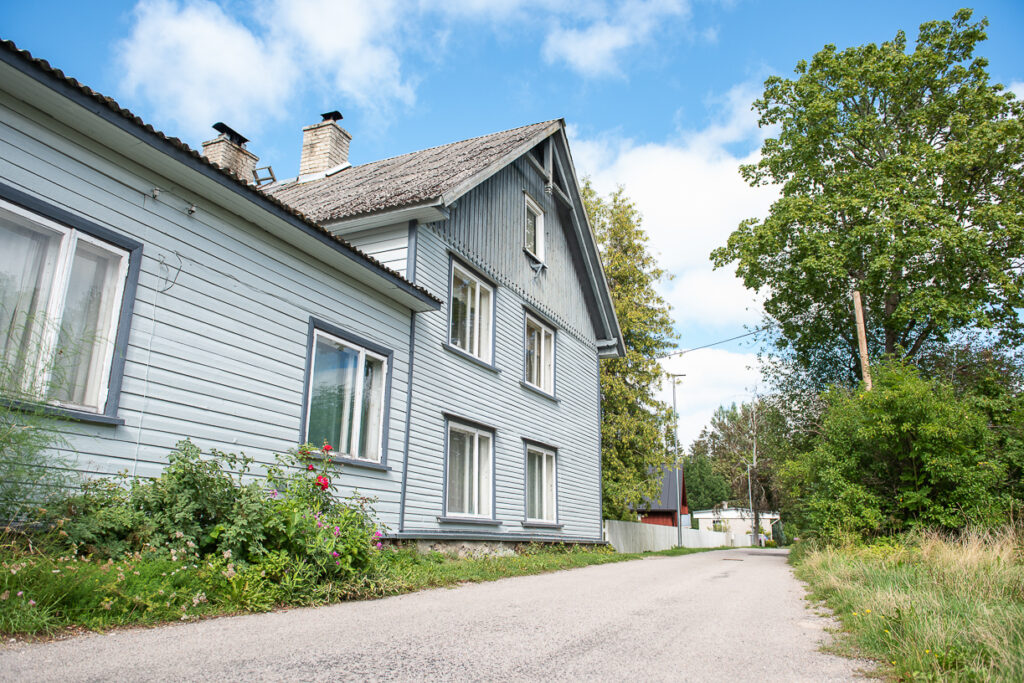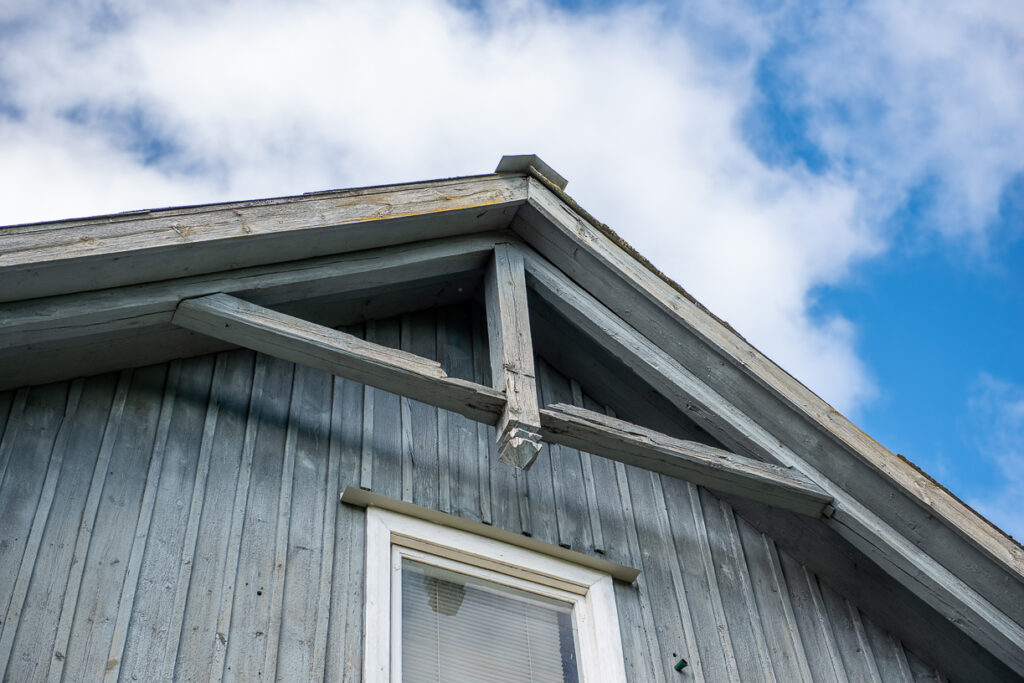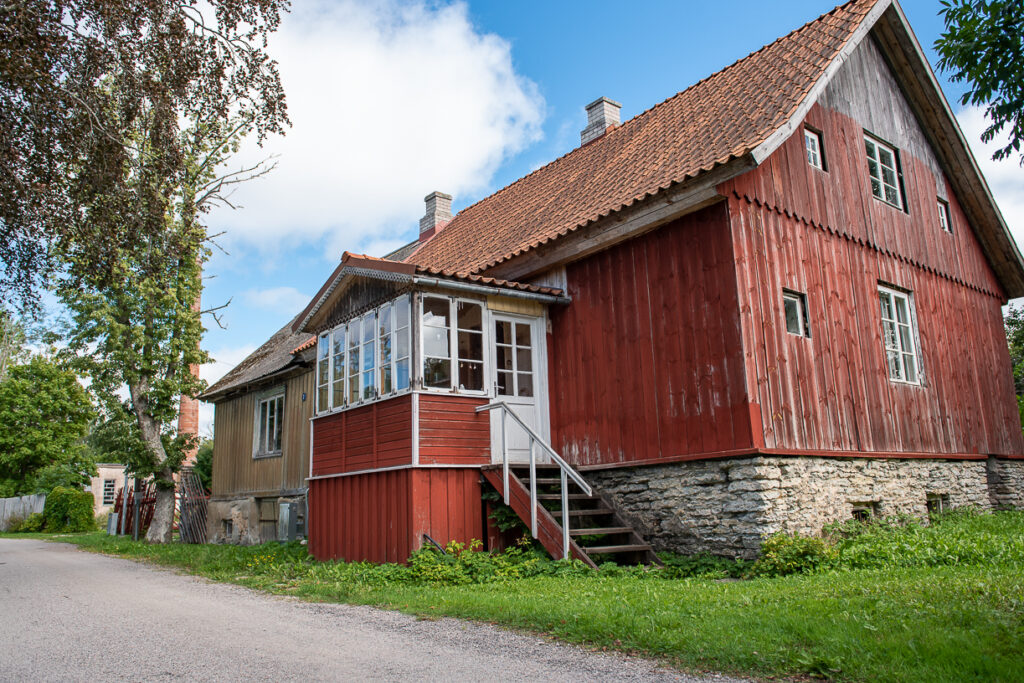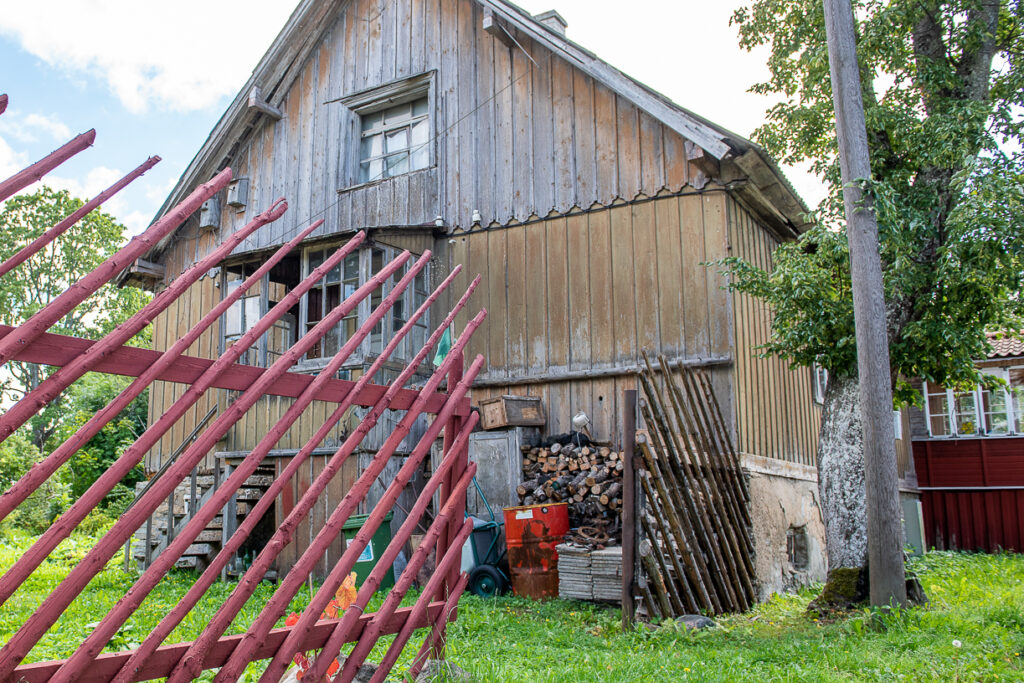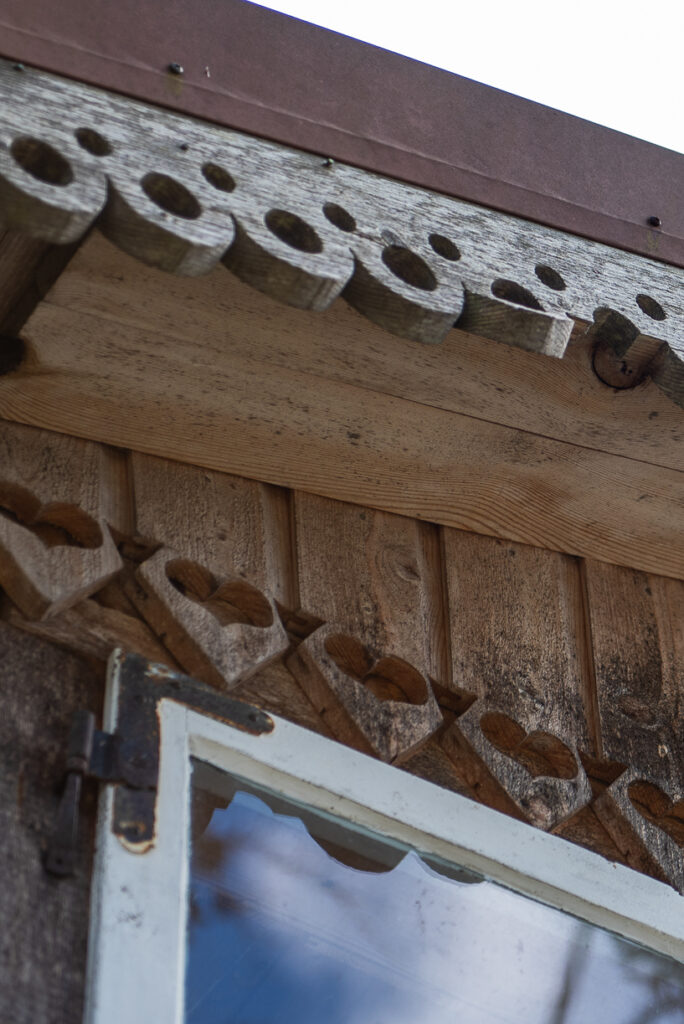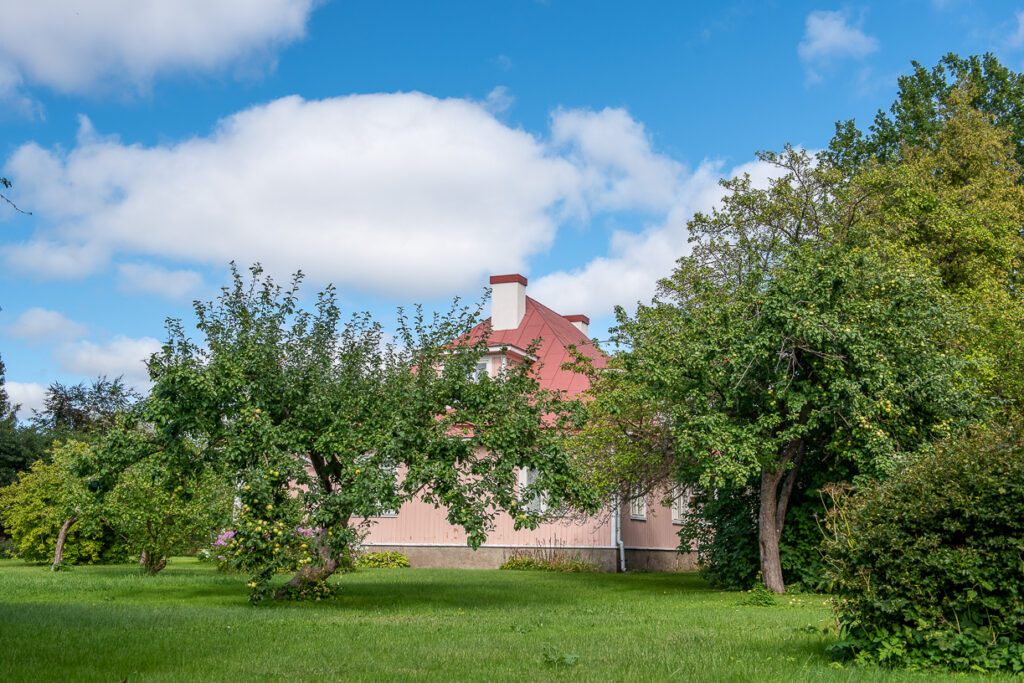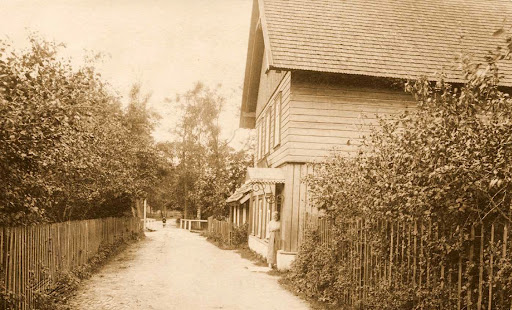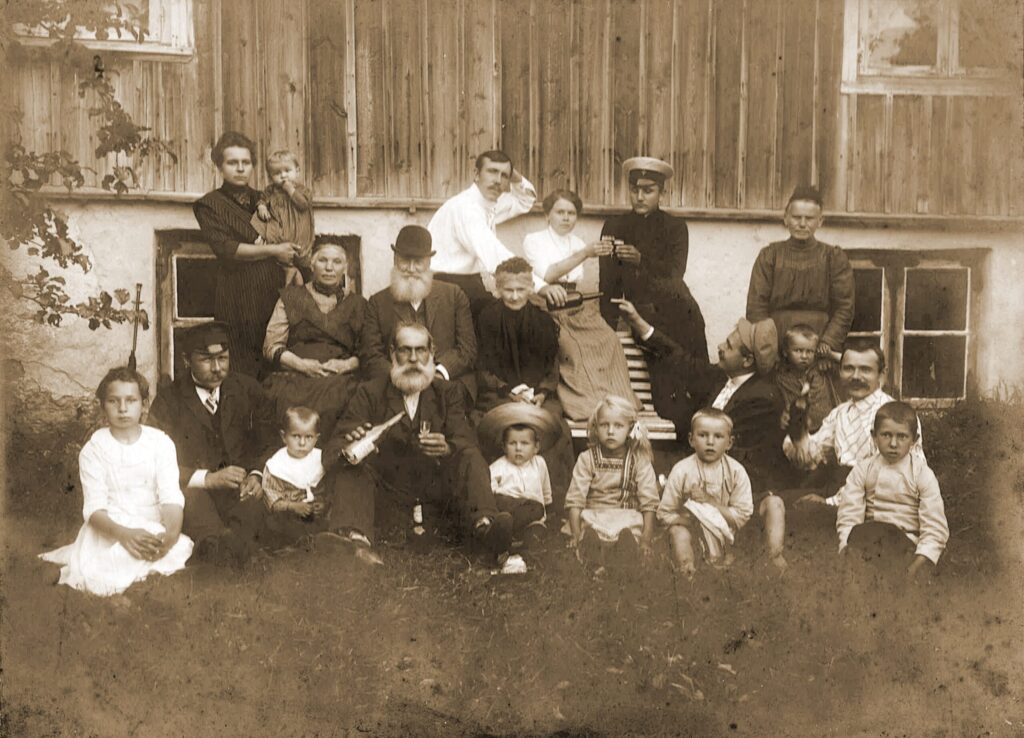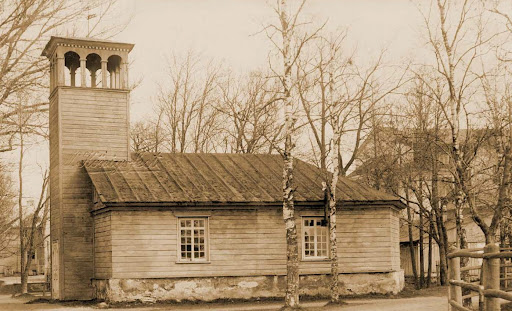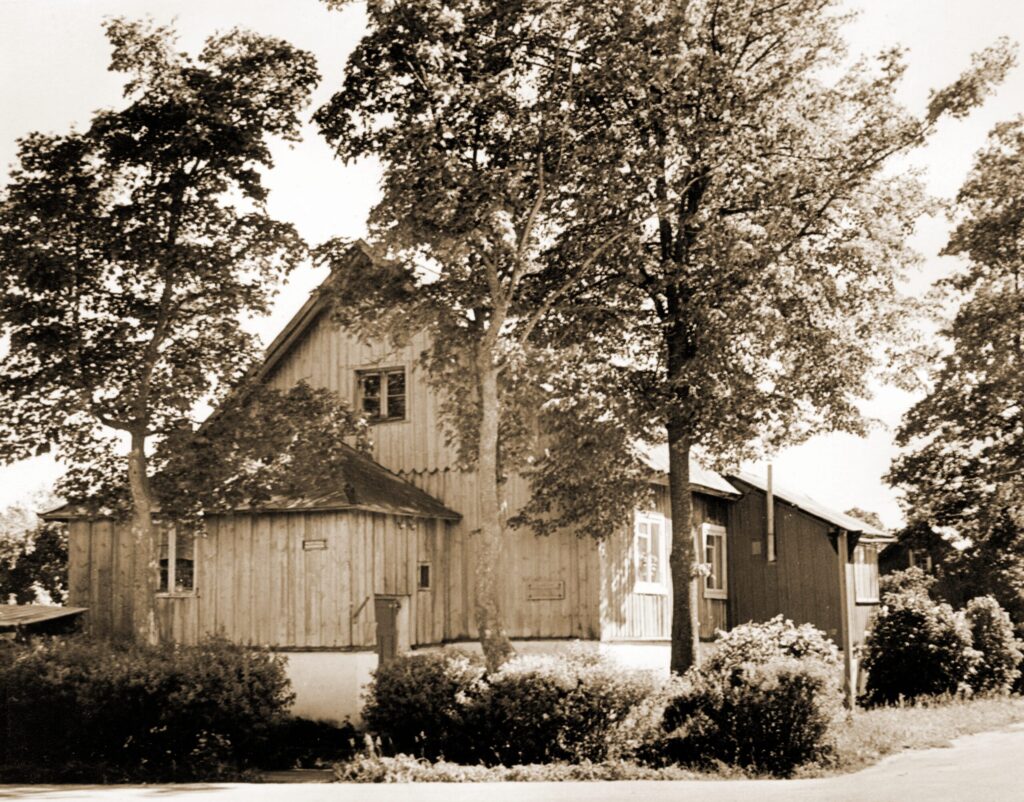Pikk Street

Pikk Street, which during the second half of the 19th century became one of the main arteries of the business and intellectual life of Kärdla, has at different times also had the names Jüri Vilms Street and Viktor Kingissepa Street. The local people, however, at first called it ‘Seitsme Jürna uulits’ (Seven Jürna Street). Right at the beginning of the street, in close proximity to the fancy main building of the broadcloth factory and the Long House, a wooden church with a beautiful architectural design was comp- leted in 1847. It was later known as the German chapel. The Wupperfeld and Spriit stores as well as the Ball bakery were nearby. The building that later became known as the Veskberg store was situated on a lot in Pikk Street as well. August Wupperfeld also became one of the first local publishers, who printed dozens of postcards with images of Hiiumaa. In 1877, the new building of the boys’ school, where both Johann Vilbert (aka Wilberg) and Joosep Bruus worked as teachers, was completed in a side street. The latter also conducted the choirs and orchestras of the broadcloth factory. In the last years of the century, the conducting of the mixed choir founded in 1855 was taken over by Elise Kuusik, who became well known as Laulu Liisa (Liisa the Song) and who also lived at the beginning of Pikk Street. The choir practices took place either in the school building or in the chapel building; and many people living in the neighborhood were involved in them.
What makes Pikk Street special is both the people who have lived and live here and its houses and gardens characteristic of Kärdla. In the workers’ house with a high foundation situated on the corner of Pikk and Valli Street, a boy grew up to become artist Aarne Miikmaa, a student of Ants Laikmaa and Ado Vabbe. The first local photographers, Elisabeth and Villem Norvid, worked in the studio on the neighbouring lot. A model made of their house represented the living conditions of the Kärdla factory town at several exhibitions. The dwelling house with two entrances on the other side of the street has retained a lot of its original appearance, characteristic of workers’ houses. The two-storey building next to it belonged to the Women’s Christian So- ciety; and in the 20th century, it became the office of the Kärdla congregation and the home of local pastors. Among others who have lived in this street, some for a shorter time, others for a longer time, are several writ- ers and teachers, for example, Alide Ertel, Elmar Vrager, and Endel Saar, artist Ülo Sooster, sacristan Villem Tarning, and organist Peeter Pruer (Puusild). Singer Boris Lehtlaan grew up, running around on the cobblestones of this street. Conductor Miina Härma used to come here for a vacation, staying in the home of the family of Johannes Ichla, a bookkeeper of the factory. In 1930s, photographer and amateur artist Helene Fendt and her husband Paul, a factory master, built a beautiful new house at the end of the street. It later became the home of Aavo Poola, the refounder and long-time conductor of the brass band of Hiiumaa.
Gallery
It is a waypoint on the journey
You might also be interested in:

